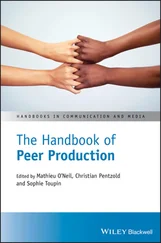15 Cooper, Franklin S. (1955). Some instrumental aids to research on speech. In Report of the Fourth Annual Round Table Meeting on Linguistics and Language Teaching (pp. 46–53). Washington, DC: Institute of Languages and Linguistics, Georgetown University.
16 Correia, J. M., Jansma, B. M. B., & Bonte, M. (2015). Decoding articulatory features from fMRI responses in dorsal speech regions. Journal of Neuroscience, 35(45), 15015–15025.
17 D’Ausilio, A., Craighero, L., & Fadiga, L. (2012). The contribution of the frontal lobe to the perception of speech. Journal of Neurolinguistics, 25(5), 328–335.
18 Fadiga, L., Craighero, L., Buccino, G., & Rizzolatti, G. (2002). Speech listening specifically modulates the excitability of tongue muscles: A TMS study. European Journal of Neuroscience, 15, 399–402.
19 Fowler, C. A. (1986). An event approach to the study of speech perception from a direct‐realist perspective. Journal of Phonetics, 14(1), 3–28.
20 Fowler, C. A., Shankweiler, D., & Studdert‐Kennedy, M. (2016). Perception of the speech code revisited: Speech is alphabetic after all. Psychological Review, 123(2), 125–150.
21 Frye, R. E., Fisher, J. M., Coty, A., et al. (2007). Linear coding of voice onset time. Journal of Cognitive Neuroscience, 19(9), 1476–1487.
22 Galantucci, B., Fowler, C. A., & Turvey, M. T. (2006). The motor theory of speech perception reviewed. Psychonomic Bulletin & Review, 13(3), 361–377.
23 Gaskell, M. G., & Marslen‐Wilson, W. D. (1999). Ambiguity, competition, and blending in spoken word recognition. Cognitive Science, 23, 439–462.
24 Gerken, L., Murphy, W. D., & Aslin, R. N. (1995). Three‐and four‐year‐olds’ perceptual confusions for spoken words. Attention, Perception, & Psychophysics, 57(4), 475–486.
25 Goldinger, S. D. (1998). Echoes of echoes? An episodic theory of lexical access. Psychological Review, 105(2), 251–279.
26 Goldinger, S. D., Luce, P. A., & Pisoni, D. B. (1989). Priming lexical neighbors of spoken words: Effects of competition and inhibition. Journal of Memory and Language, 28, 501–518.
27 Greenberg, J. H., & Jenkins, J. J. (1964). Studies in the psychological correlates of the sound system of American English. Word, 20(2), 157–177.
28 Guediche, S., Minicucci, D., Shih, P., & Blumstein, S. E. (2018). The neural system is sensitive to abstract properties of speech. Unpublished paper.
29 Guenther, F. H., Nieto‐Castanon, A., Ghosh, S. S., & Tourville, J. A. (2004). Representation of sound categories in auditory cortical maps. Journal of Speech, Language, and Hearing Research, 47(1), 46–57.
30 Hickok, G., & Poeppel, D. (2007). The cortical organization of speech processing. Nature Reviews Neuroscience, 8(5), 393–402.
31 Iverson, P., & Kuhl, P. K. (1996). Influences of phonetic identification and category goodness on American listeners’ perception of/r/and/l/. Journal of the Acoustical Society of America, 99(2), 1130–1140.
32 Jakobson, R., Fant, C. G., & Halle, M. (1951). Preliminaries to speech analysis: The distinctive features and their correlates. Cambridge, MA: MIT Press.
33 Joanisse, M. F., Zevin, J. D., & McCandliss, B. D. (2007). Brain mechanisms implicated in the preattentive categorization of speech sounds revealed using fMRI and a short‐interval habituation trial paradigm. Cerebral Cortex, 17(9), 2084–2093.
34 Johnson, A. A., Reidy, P. F., & Edwards, J. R. (2018). Quantifying robustness of the/t/–/k/contrast using a single, static spectral feature. Journal of the Acoustical Society of America, 144(2), EL105–111.
35 Kewley‐Port, D. (1983). Time‐varying features as correlates of place of articulation in stop consonants. Journal of the Acoustical Society of America, 73(1), 322–335.
36 Koenig, W., Dunn, H. K., & Lacy, L. Y. (1946). The sound spectrograph. Journal of the Acoustical Society of America, 17, 19–49.
37 Kurowski, K., & Blumstein, S. E. (1984). Perceptual integration of the murmur and formant transitions for place of articulation in nasal consonants. Journal of the Acoustical Society of America, 76(2), 383–390.
38 Liberman, A. M., Cooper, F. S., Shankweiler, D. P., & Studdert‐Kennedy, M. (1967). Perception of the speech code. Psychological Review, 74(6), 431–461.
39 Liberman, A. M., Delattre, P., & Cooper, F. S. (1952). The role of selected stimulus‐variables in the perception of the unvoiced stop consonants. American Journal of Psychology, 65, 497–516.
40 Lisker, L. (1986). “Voicing” in English: A catalogue of acoustic features signaling/b/versus/p/in trochees. Language and Speech, 29(1), 3–11.
41 Lotto, A. J., Hickok, G. S., & Holt, L. L. (2009). Reflections on mirror neurons and speech perception. Trends in Cognitive Sciences, 13(3), 110–114.
42 Luce, P. A. (1986). Neighborhoods of words in the mental lexicon. Unpublished doctoral dissertation. Indiana University, Bloomington.
43 Luce, P. A., Goldinger, S. D., Auer, E. T., & Vitevitch, M. S. (2000). Phonetic priming, neighborhood activation, and PARSYN. Attention, Perception, & Psychophysics, 62(3), 615–625.
44 Luce, P. A., & Pisoni, D. B. (1998). Recognizing spoken words: The neighborhood activation model. Ear and Hearing, 19, 1–36.
45 Mack, M., & Blumstein, S. E. (1983). Further evidence of acoustic invariance in speech production: The stop–glide contrast. Journal of the Acoustical Society of America, 73(5), 1739–1750.
46 McClelland, J. L. (1979). On the time relations of mental processes: An examination of systems of processes in cascade. Psychological Review, 86(4), 287–330.
47 McClelland, J. L., & Elman, J. (1986). The TRACE model of speech perception. Cognitive Psychology, 18, 1–86.
48 McClelland, J. L., & Rumelhart, D. (1986). Parallel distributed processing: Vol. 2. Psychological and biological models. Cambridge, MA: MIT Press.
49 McMurray, B., & Jongman, A. (2011). What information is necessary for speech categorization? Harnessing variability in the speech signal by integrating cues computed relative to expectations. Psychological Review, 118(2), 219–246.
50 McMurray, B., Tanenhaus, M. K., & Aslin, R. N. (2002). Gradient effects of within‐category phonetic variation on lexical access. Cognition, 86(2), B33–B42.
51 McMurray, B., Tanenhaus, M. K., & Aslin, R. N. (2009). Within‐category VOT affects recovery from “lexical” garden‐paths: Evidence against phoneme‐level inhibition. Journal of Memory and Language, 60(1), 65–91.
52 Mesgarani, N., Cheung, C., Johnson, K., & Chang, E. F. (2014). Phonetic feature encoding in human superior temporal gyrus. Science, 343(6174), 1006–1010.
53 Milberg, W., Blumstein, S., & Dworetzky, B. (1988). Phonological factors in lexical access: Evidence from an auditory lexical decision task. Bulletin of the Psychonomic Society, 26(4), 305–308.
54 Miller, G. A., & Nicely, P. E. (1955). An analysis of perceptual confusions among some English consonants. Journal of the Acoustical Society of America, 27(2), 338–352.
55 Miller, J. L. (1997). Internal structure of phonetic categories. Language and Cognitive Processes, 12, 865–869.
56 Misiurski, C., Blumstein, S. E., Rissman, J., & Berman, D. (2005). The role of lexical competition and acoustic–phonetic structure in lexical processing: Evidence from normal subjects and aphasic patients. Brain and Language, 93(1), 64–78.
57 Mottonen, R., & Watkins, K. E. (2009). Motor representations of articulators contribute to categorical perception of speech sounds. Journal of Neuroscience, 29, 9819–9825.
58 Myers, E. B., Blumstein, S. E., Walsh, E., & Eliassen, J. (2009). Inferior frontal regions underlie the perception of phonetic category invariance. Psychological Science, 20(7), 895–903.
59 Nossair, Z. B., & Zahorian, S. A. (1991). Dynamic spectral shape features as acoustic correlates for initial stop consonants. Journal of the Acoustical Society of America, 89(6), 2978–2991.
Читать дальше
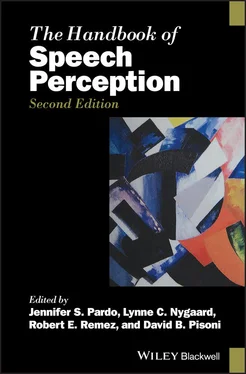

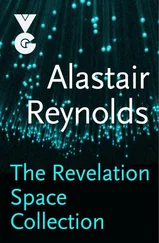
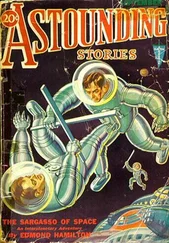
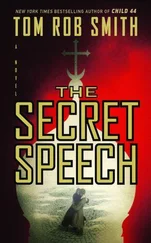

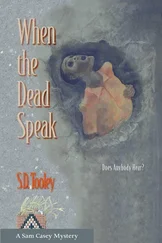
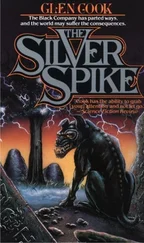
![О Генри - Справочник Гименея [The Handbook of Hymen]](/books/407356/o-genri-spravochnik-gimeneya-the-handbook-of-hymen-thumb.webp)



